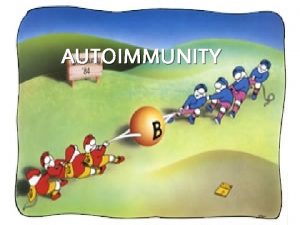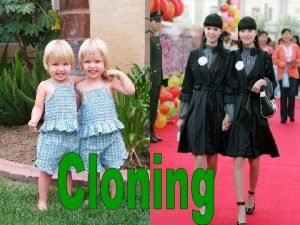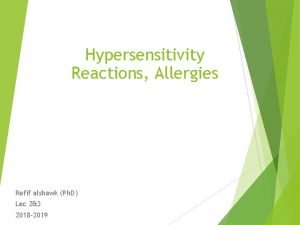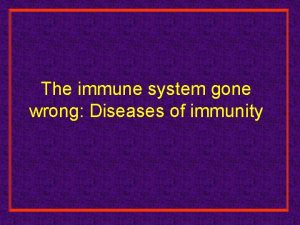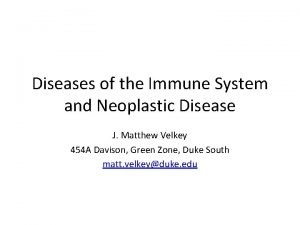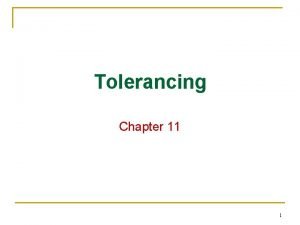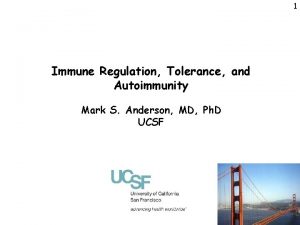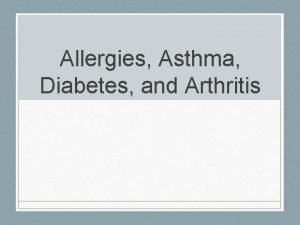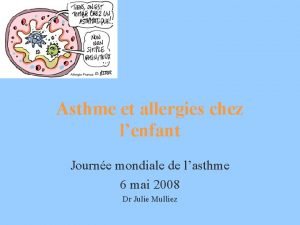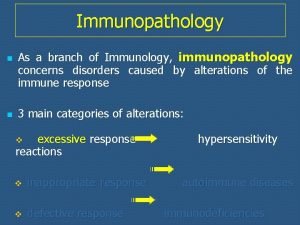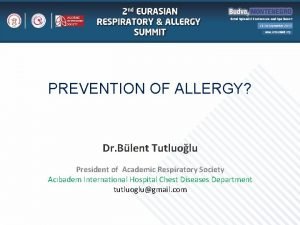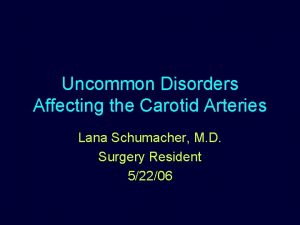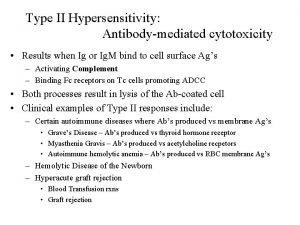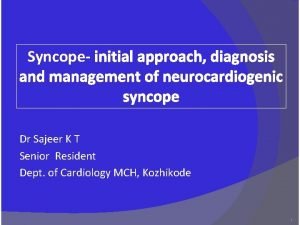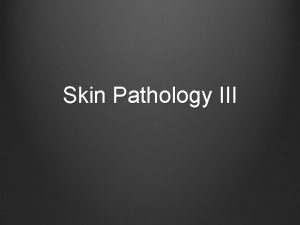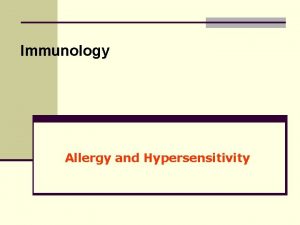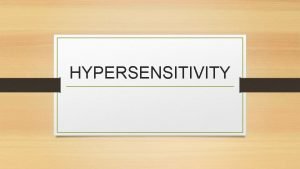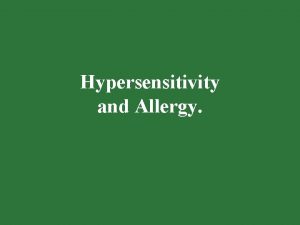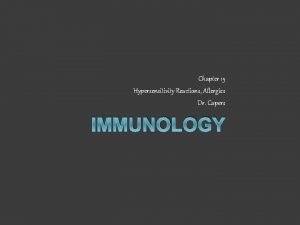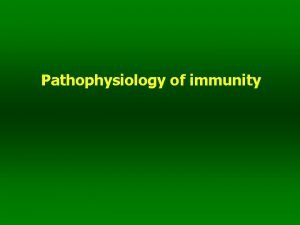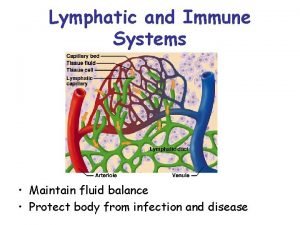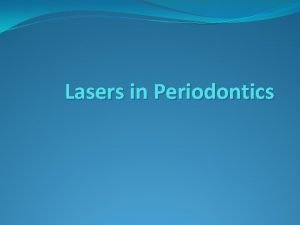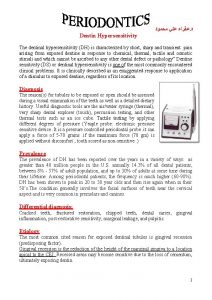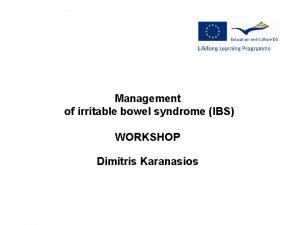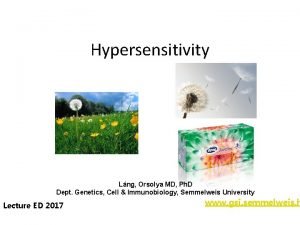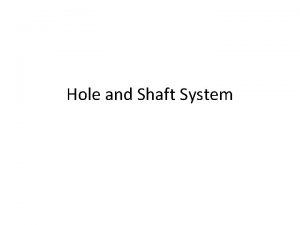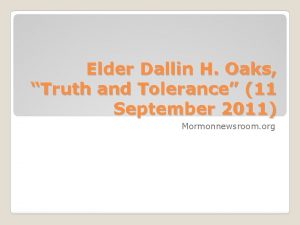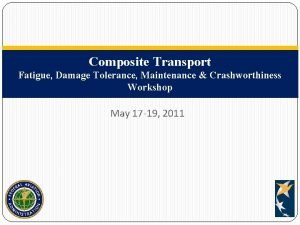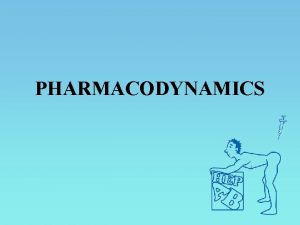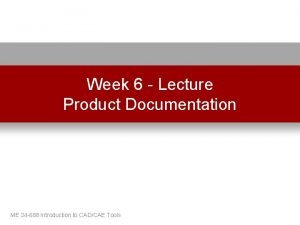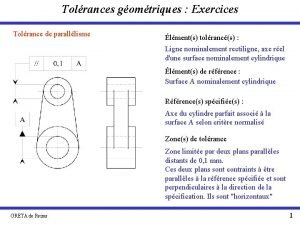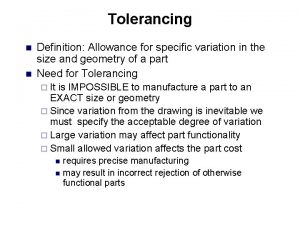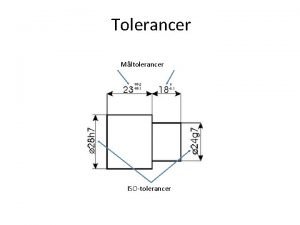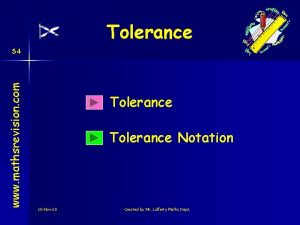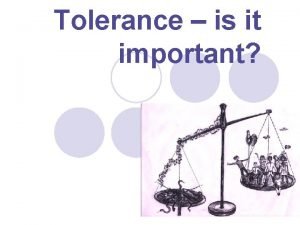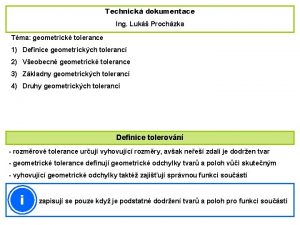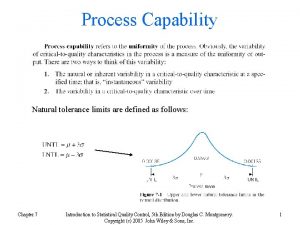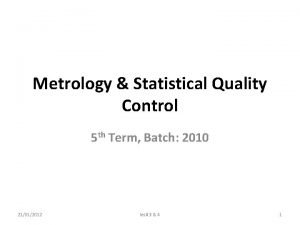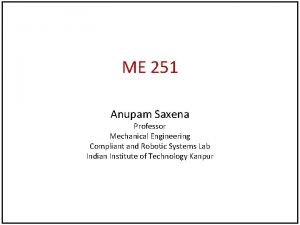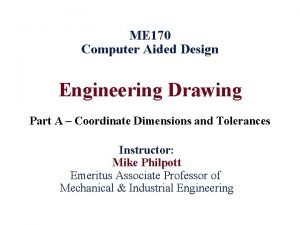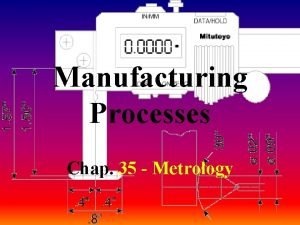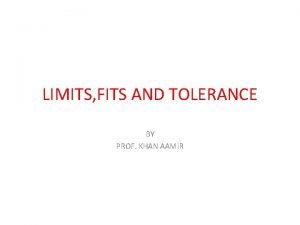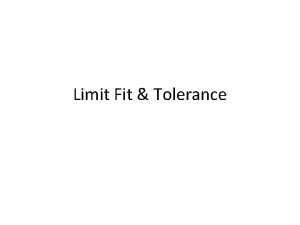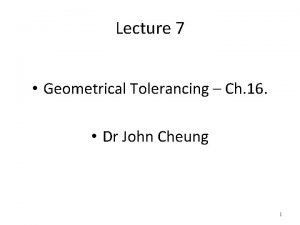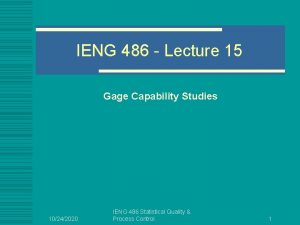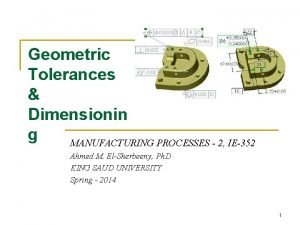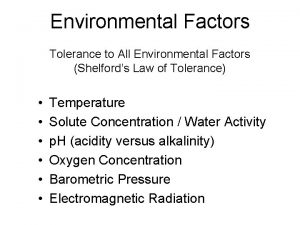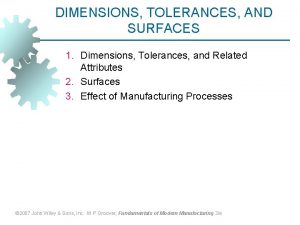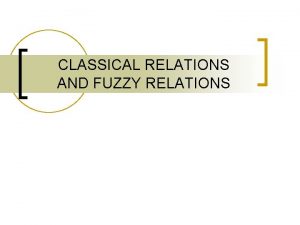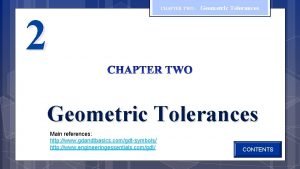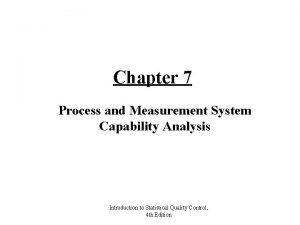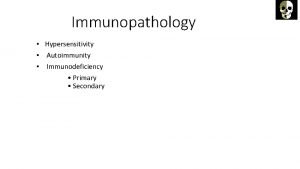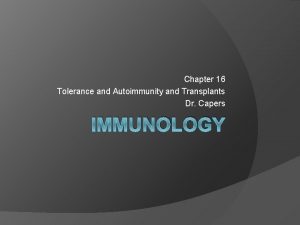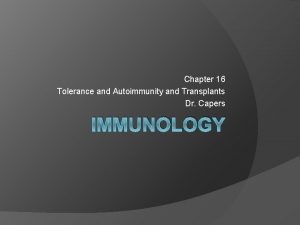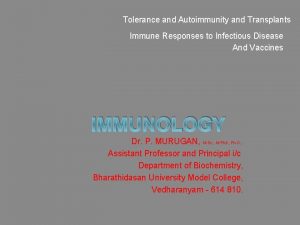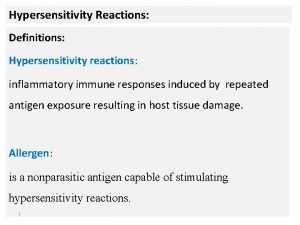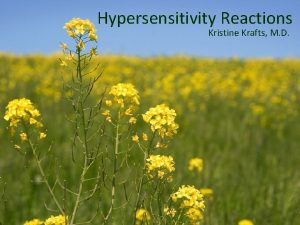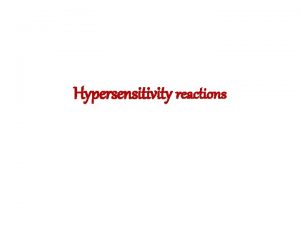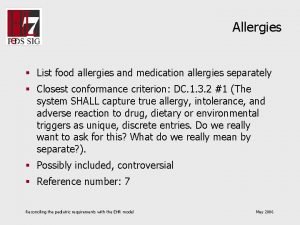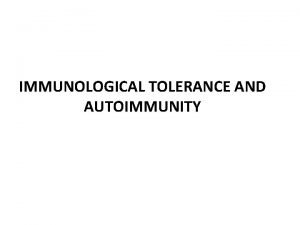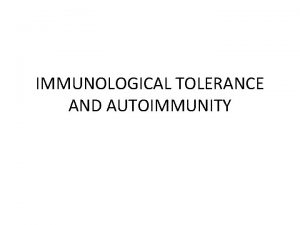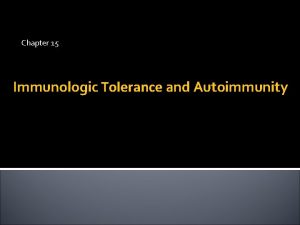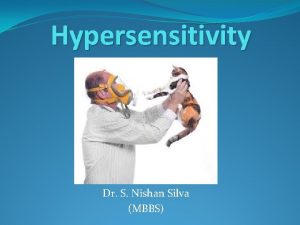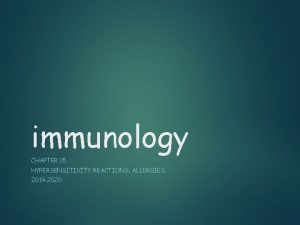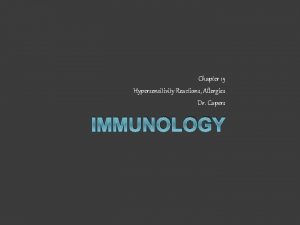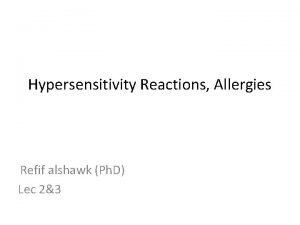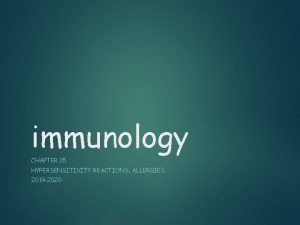Hypersensitivity Reactions Allergies Tolerance and Autoimmunity and Transplants






































































- Slides: 70

Hypersensitivity Reactions, Allergies Tolerance and Autoimmunity and Transplants IMMUNOLOGY Dr. P. MURUGAN, M. Sc. , M. Phil. , Ph. D. , Assistant Professor and Principal i/c Department of Biochemistry, Bharathidasan University Model College, Vedharanyam - 614 810.

Hypersensitivity – responding inappropriately to an antigen Inflammatory response can have deleterious effects ○ Tissue injury ○ Disease ○ death

Hypersensitivity Reactions May develop in course of humoral OR cellmediated response ○ Immediate hypersensitivity Anaphylactic Antibody-antigen complexes Manifests in minutes ○ Delayed-type hypersensitivity May occur in days


Type I Examples ○ Anaphylactic shock ○ Asthma ○ Food allergies ○ Hay fever ○ Hives ○ Bug bites

Type I – Ig. E-Mediated Hypersensitivity Induced by antigens referred to as allergens Induces humoral response but induces high secretion of Ig. E ○ Fc portion of Ig. E binds with Fc receptors on mast cells and basophils ○ Degranulation occurs

Type I

Type 1 Common components Allergens ○ Atopy – hereditary predisposition to development of immediate hypersensitivity reactions to common antigens - Allows nonparasitic antigens to easily induce Ig. E response Ig. E ○ Normally lowest of all antibody classes in serum ○ Half-life is 2 -3 days but once bound to mast cells or basophils, can last for weeks Mast cells and basophils Ig. E binding receptors ○ High affinity ○ Low affinity Atopic individuals have higher amount of soluble Ig. E receptor that has been shown to increase Ig. E production by B cells


Ig. E cross-linkage initiates degranulation Once cross-linkage of antigen has occurred, intracellular signaling result in mast cell degranulation ○ Cooperation among protein and lipid kinases, phosphatases, rearrangement of the cytoskeleton

Granulocytes produce molecules responsible for Type I Hypersensitivity Primary mediators Preformed and stored in granules – ready to go Examples: histamine, proteases, eosinophil chemotactic factor, heparin Secondary mediators Synthesized after reaction is initiated Examples: platelet-activating factor, leukotrienes, prostaglandins, bradykinins, some cytokines and chemokines

Histamine ○ Formed by decarboxylation of amino acid Histidine ○ Major component of granules ○ Effects observed in minutes ○ Contraction of smooth muscle (intestinal and bronchial), increase permeability of venules, increased mucus secretion by goblet cells Leukotrienes and Prostaglandins ○ Increased vascular permeability ○ Smooth muscle contraction ○ Mucus production Cytokines and Chemokines

Categories of Type I Hypersensitivity Systemic anaphylaxis Quick, can be fatal Respiration labored, blood pressure drops, bronchiole constriction, edema, shock Epinephrine treats, relaxes smooth muscle and increases cardiac output (prevents vascular collapse) Localized Hypersensitivity Reactions Limited to tissue or organ Types: Allergic Rhinitis – “hay fever” Asthma Atopic dermatitis – eczema Atopic urticaria – hives Food Allergies Can cause local reactions or anaphylaxis

Asthma Inflammatory disease Induce expression of adhesion molecules on endothelial cells for eosinophils and neutrophils ○ Cause significant injury because of toxic enzymes, cytokines ○ Notice sloughing of the pseudostratified ciliated columnar epithelial cells lining the bronchiole

Clinical Methods to detect Type 1 Skin testing Checking serum level of Ig. E

Susceptibility to Type I Air pollution can increase allergies Farm animals and bacteria exposure early in life can decrease allergies ○ Hygiene Hypothesis Diet Genetics

Control of Type 1 Avoiding contact Immunotherapy ○ Subcutaneous injections of allergens - desentization Causes shift to Ig. G production instead of Ig. E ○ Monoclonal anti-human Ig. E Drug therapies ○ Antihistamines ○ Antileukotrienes ○ Steroids ○ Drugs that enhance production of second messenger c. AMP - Prevents degranulation of mast cells ○ Epinephrine and epinephrine agonists (albuterol)

Watch this video on Type I: https: //www. youtube. com/watch? v=2 t mw 9 x 2 Ot_Q

Type II Hypersensitivity Examples ○ Blood transfusions ○ Hemolytic disease of the newborn

Type II – Antibody-Mediated Cytotoxic Hypersensitivity Transfusion Reactions Due to exposure to microorganisms in gut, individuals have antibodies to blood types not their own Antibody attaches to RBC and initiates complement system to lyse RBC After lysis: ○ Hemoglobin detected in plasma, starts to filter through kidneys and found in urine (hemoglobinuria) ○ Hemoglobin converted to bilirubin – toxic at high levels ○ Fever, chills, blood clotting

Type II – Antibody-Mediated Cytotoxic Hypersensitivity Hemolytic disease of newborn Rh+ fetus, Rh- mother Ig. G antibodies cross placenta Some of these antibodies may be anti-Rh antibodies - Can have severe consequences Antibodies against ABO blood groups produce less consequences, can be easily treated Rhogam shot ○ Given to mother ○ Anti-Rh antibodies bind to fetal cells that might have entered mother’s system during birthing process, facilitates clearing before there is a B cell response


Watch this video on Type II: https: //www. youtube. com/watch? v=k. L a. Uz 58 CBMc

Type III Hypersensitivity Examples: ○ Arthus reactions (more severe reaction to antigen injected into skin) ○ Serum sickness ○ Pathogens - Meningitis - Hepatitis - malaria ○ Drugs - Sulfonamides, penicillin ○ Autoimmune: - Rheumatoid arthritis - Lupus

Type III – Immune complex-mediated hypersensitivity Complexing of antigen plus antibody facilitates phagocytosis and clearing of antigen Large amounts of these complexes can lead to tissue damage

Watch this video on Type III: https: //www. youtube. com/watch? v=Sy xz. U 2 Sl_Yw

Type IV Hypersensitivity Examples: ○ contact dermitis ○ Tubercular lesions ○ Graft rejection

Type IV – Delayed-type Hypersensitivity Some subpopulations of TH cells encounter antigen, secrete cytokines and induce localized inflammatory response Most cases are not detrimental

Type IV Sensitization phase and Effector phase of DTH

Prolonged DTH can lead to formation of granuloma Tuberculosis test is done this way

Type IV – contact dermatitis

Watch this video on Type IV: https: //www. youtube. com/watch? v=C 3 E 5 COZ 1 XC 8

Chronic Inflammation Causes: ○ Infections ○ Continuing physical damage to tissue ○ Obesity ○ autoimmunity

Tolerance and Autoimmunity and Transplants

“Horror Autotoxicus” Failure of host’s humoral and cellular immune systems to distinguish self from non-self Autoimmunity Can result in tissue and organ damage, can be fatal


Tolerance # of mechanisms are in place to protect individual from self-reactive lymphocytes Central tolerance – deleting T or B clones before maturity if they have receptors that recognize selfantigens with great affinity Peripheral tolerance – kills lymphocytes in secondary lymphoid tissue ○ Also, life span of lymphocytes regulated by apoptosis




Some antigens can produce tolerance Termed tolerogens rather than immunogens ○ High dosages of antigen ○ Persistance of antigen in host ○ IV or oral introduction ○ Absence of adjuvants ○ Low levels of costimulators CD 28 will bind to B 7 and provide activating signals; however, it was discovered that another receptor, CTLA-4 will bind to B 7 and inhibit

Organ-specific autoimmune diseases Target antigen specific to organ or gland Cellular lysis and chronic inflammation that can damage organ

Hashimoto’s Thyroiditis Mainly middle-aged women Target is thyroid antigens Goiter can form Hypothyroidism - decrease

Autoimmune anemias Pernicious anemia ○ Ab against membrane bound intestinal protein that uptakes B 12 - needed for hematopoiesis Hemolytic anemia ○ Abs to red-blood cell antigens ○ Type II Hypersensitivity Drug-induced anemia

Goodpasture’s syndrome Abs against basement membranes in glomeruli and aveoli Leads to kidney damage and pulmonary hemmorhage Type II Hypersensitivity

Insulin-Dependent Diabetes Mellitus (Type 1) Abs against beta cells that produce insulin Insulin is needed by cells to uptake glucose needed for cellular respiration Type IV Hypersensitivity- cell mediated destruction

In some autoimmune diseases, antibodies act as agonists Bind inappropriately to receptors, resulting in overproduction ○ For example, up-regulating a hormonal response without the presence of that hormone ○ Grave’s Disease – auto-Ab binds to receptor for thyroid stimulating hormone resulting in overstimulation of thyroid - Type II Hypersensitivity ○ Myasthenia gravis Auto-Abs bind acetylcholine receptors on motor end plate of muscles – progressively weakened skeletal muscles - Type II Hypersensitivity


Watch this video: https: //www. youtube. com/watch? v=b. YGx. Gdu 9 Ms. Q&vl=en

Systemic Autoimmune Diseases Response is directed toward wide range of target antigens

Systemic Lupus Erythematosus Typically middle-aged women Fever, weakness, arthritis, skin rash, kidney problems Produce auto-Abs to DNA, histones, platelets, leukocytes, clotting factors Excessive complement activation Type III Hypersensitivity – immune complexes

Multiple sclerosis Numbness, paralysis, vision loss Inflammatory lesions in myelin sheath caused by T cells Epidemiology ○ Frequent in African American and Hispanic women ○ More common in Northern Hemisphere, more common north of 37 th parallel ○ Environmental components as well as genetic components

Rheumatoid Arthritis Chronic inflammation of joints Produce auto-Abs that bind Fc portion of Ig. G circulating in blood that creates immune complexes Type III Hypersensitivity

Animal Models Autoimmunity develops spontaneously in some lab animals and can be induced with manipulation Rabbits injected with acetylcholine receptors from eels ○ Soon developed muscular weakness as seen with Myasthenia gravis

Animal models have implicated CD 4+ T cells to be primary mediator of some autoimmune responses Treatment with anti-CD 4 antibodies can help

Some studies have shown association between expressing particular MHC allele and susceptibility to autoimmunity Individuals that express HLA-B 27 have 90 times greater chance of having ankylosing spondylitis (spine inflammation) ○ Interestingly, most of those are male even though women are more likely to suffer from autoimmune disease

Proposed mechanisms for induction of autoimmunity Release of sequestered antigens ○ Blood-brain barrier, sperm released into tissues during vasectomy Molecular mimicry Inappropriate expression of Class II MHC ○ Non-antigen presenting cells will for some reason express Class II MHC - Can be caused by viral infection ○ This allows them to present self antigen to T helper cells – leads to inappropriate reaction


Treatment Immunosuppressive drugs Removal of thymus (for example, with myasthenia gravis) Plasmapheresis – removing plasma and then returning RBCs (removes extra immune complexes) Treating the inflammation Antigen given orally can induce tolerance

Transplantation Transfer of cells, tissues, or organs 1 st human kidney transplant 1935 Patient died to mistake in blood typing

Immunosuppressive Agents ○ Delay or prevent rejection ○ Majority of these have overall immunosuppressive effect ○ New methods being developed Inducing specific tolerance to graft without suppressing other immune responses

Different types of Transplants Autograft ○ Self tissue transferred from one part of body to another Isograft ○ Tissue transferred between genetically identical individuals Allograft ○ Tissue transferred between genetically different members of same species Most of our transplants Xenograft ○ Tissue transferred between different species ○ Read Box 16 -3


Tissues that are antigenically similar – histocompatible Loci most responsible for the most vigorous allograft rejection are within MHC complex ○ Test donors to get matching haplotype Mismatches with Class II are more likely to lead to rejection than mismatches with Class I ○ Also test for blood type

Microcytoxicity assay for MHC haplotypes If antigen is present on cell, complement will lyse it, and it will uptake dye (blue) Donor 1 has antigens in common with recepient

Clinical Manifestations of Graft Rejections Hyperacute ○ Within hours Acute ○ Within weeks Chronic ○ Months to years

Clinical Manifestations of Graft Rejection Hyperacute Pre-existing recipient antibodies Graft never become vascularized

Immunosuppressive Therapy Mitotic inhibitors i. e. Azathioprine Help lower T cell proliferation Methotrexate Folic acid antagonist – blocks purine synthesis Corticosteroids Reduces inflammation X-irradiation of recipient before grafting Antibodies specific for immune cells to keep them at lower numbers

GVHD – Graft versus Host Disease, watch this video: https: //www. youtube. com/watch? v=Rmx 11 Jp. KLGA

Xenotransplantation ○ Shortage of human donors ○ Obstacles with immune system ○ Closely related species have more success - However, taking risk of creating new viruses by recombination in graft
 Autoimmunity literally means
Autoimmunity literally means Embryo transplants gcse biology
Embryo transplants gcse biology Refifs
Refifs Delayed type hypersensitivity reactions
Delayed type hypersensitivity reactions Delayed type hypersensitivity reactions
Delayed type hypersensitivity reactions 40h6 tolerance
40h6 tolerance Cellular and molecular immunology
Cellular and molecular immunology Section 2 classifying chemical reactions
Section 2 classifying chemical reactions Redox reaction
Redox reaction Section 2 reinforcement classifying chemical reactions
Section 2 reinforcement classifying chemical reactions Types of reactions
Types of reactions Unit 5 chemical reactions answers
Unit 5 chemical reactions answers Boutonniere nodes
Boutonniere nodes Arthritis and food allergies
Arthritis and food allergies Hypersensitivity types and examples
Hypersensitivity types and examples Allergic conjunctivitis icd-9
Allergic conjunctivitis icd-9 Beta glucan allergies
Beta glucan allergies Allergies croisées tableau
Allergies croisées tableau Dr. lana schumacher
Dr. lana schumacher Type 3 hypersensitivity
Type 3 hypersensitivity Carotid sinus hypersensitivity
Carotid sinus hypersensitivity Pemphigus foliaceus histology
Pemphigus foliaceus histology Hypersensitivity personality
Hypersensitivity personality Serum sickness hypersensitivity type
Serum sickness hypersensitivity type Schultz dale phenomenon is which type of hypersensitivity
Schultz dale phenomenon is which type of hypersensitivity Hypersensitivity
Hypersensitivity Capers allergy
Capers allergy Dermatomyositis hypersensitivity type
Dermatomyositis hypersensitivity type Type 2 hypersensitivity
Type 2 hypersensitivity Gingivoplasty
Gingivoplasty Dental hypersensitivity
Dental hypersensitivity Visceral hypersensitivity
Visceral hypersensitivity Anaphylactoid vs anaphylaxis
Anaphylactoid vs anaphylaxis Classification of hypersensitivity
Classification of hypersensitivity Different types of fits
Different types of fits Unilateral tolerance definition
Unilateral tolerance definition Truth and tolerance oaks
Truth and tolerance oaks Fatigue and damage tolerance course
Fatigue and damage tolerance course Mechanism of drug action
Mechanism of drug action School zero tolerance policy
School zero tolerance policy Dimension tolerance chart
Dimension tolerance chart Tolérances géométriques
Tolérances géométriques Circularity vs roundness
Circularity vs roundness What is a unilateral tolerance
What is a unilateral tolerance Nominelt mål
Nominelt mål Tolerance maths
Tolerance maths Tolerance in maths
Tolerance in maths Tolerance is important
Tolerance is important Kruhovitost značka
Kruhovitost značka Mid succession
Mid succession What is natural tolerance
What is natural tolerance Precision tolerance ratio
Precision tolerance ratio Tolerance vs acceptance
Tolerance vs acceptance 25f7 tolerance
25f7 tolerance 8h7 tolerance
8h7 tolerance Engineering drawing symbols
Engineering drawing symbols Allowance vs tolerance
Allowance vs tolerance Tableau ajustement arbre
Tableau ajustement arbre Limit fit tolerance
Limit fit tolerance Clearance fit tolerance
Clearance fit tolerance Flatness geometric tolerance
Flatness geometric tolerance Precision to tolerance ratio
Precision to tolerance ratio Gd and t symbol
Gd and t symbol Concentricity tolerance chart
Concentricity tolerance chart Tolerance vs acceptance
Tolerance vs acceptance Fault tolerance definition
Fault tolerance definition Shelfords law of tolerance
Shelfords law of tolerance Surface finish symbols
Surface finish symbols Fuzzy cartesian product example
Fuzzy cartesian product example Geometric tolerance
Geometric tolerance Tolerance ratio
Tolerance ratio
